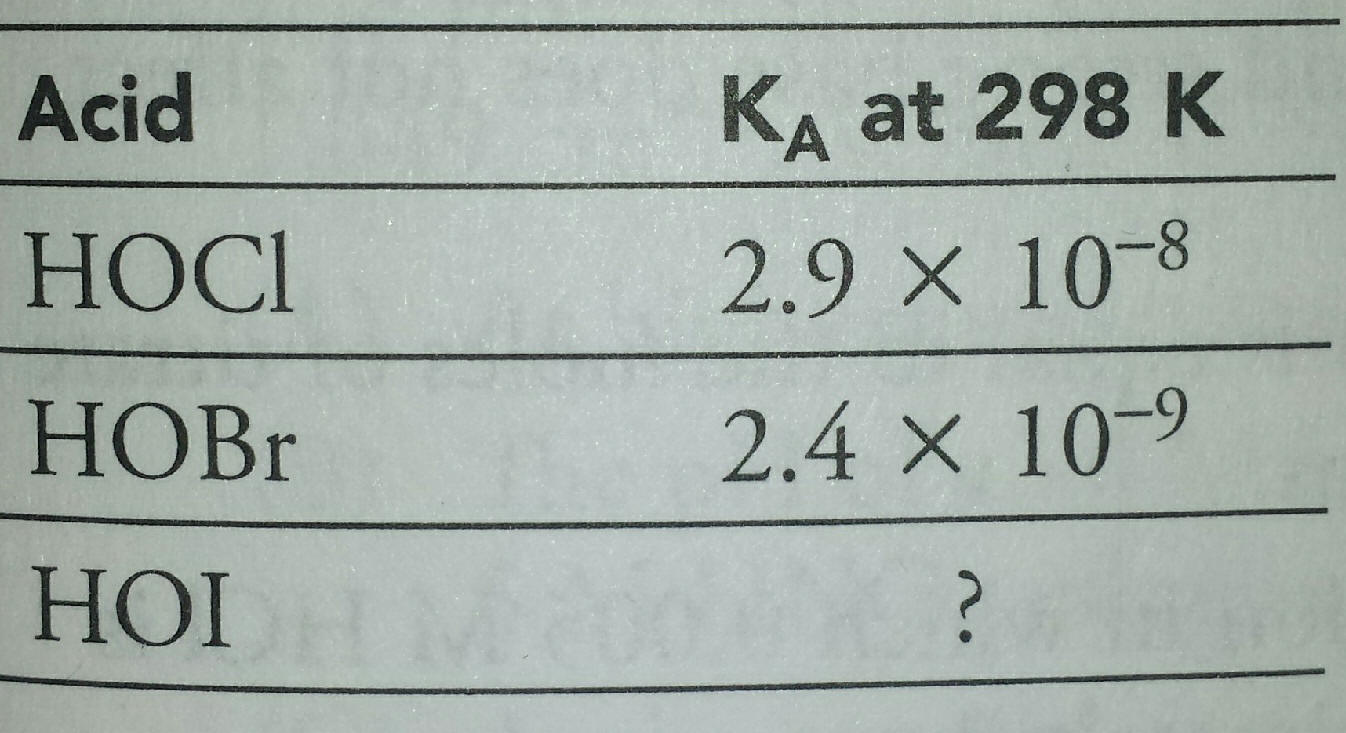
Journal Entry:

Which of the following is true regarding the
strengths of HOCl and HOBr?
(A) HOBr is a stronger acid because Br is a larger atom than Cl and loses its
proton more easily than HOCl.
(B) HOCl is stronger acid because Cl is more electronegative that HOBr.
(C) HOBr is the stronger acid than HOCl because the negative log of its Ka, the
pKa, is larger that the pKa of HOCl.
(D) The strength of the acids cannot be compared without knowing the
concentration and pH of their respective solutions.
Learning Intentions
We will learn how to draw a particle drawing for a strong and weak acid and a strong and weak base and be able to write a Ka or Kb equation to represent the reaction.
We will learn how to identify acid-base, conjugate acid-conjugate base pairs.
We will learn what amphoteric means and be able to identify an example.
We will learn how to set up a titration and how to analyze titration curves for various acids and bases.
We will learn what a buffer is and how it influences an acid base reaction.
Closing Task:
You can create particle drawings for strong and weak
acids or bases and write a Ka or Kb equation to represent the reaction.
Content Standards being covered:
Chemical equilibrium reasoning can be used to describe the proton-transfer reactions of acid base chemistry. (E.K.6.C.1)
The pH is an important characteristic of aqueous solutions that can be controlled with buffers. Comparing pH to pKa allows one to determine the protonation state of a molecular with a labile proton. (E.K. 6.C.2)